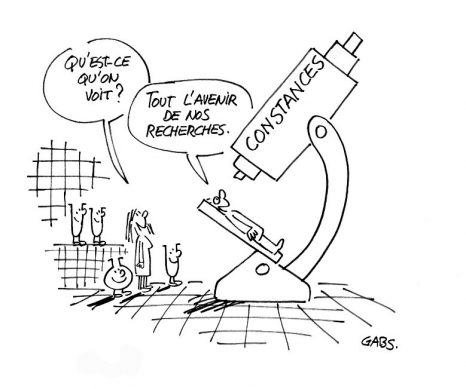Researcher Contact
Olivier Robineau
IPLESP (Sorbonne Université/Inserm)
e-mail : byvivre.ebovarnh82@tznvy.pbz
Téléphone sur demande
Olivier Robineau
IPLESP (Sorbonne Université/Inserm)
e-mail : byvivre.ebovarnh82@tznvy.pbz
Téléphone sur demande

During the first wave of COVID-19, participants from the Constances cohort completed two questionnaires to determine the presence of symptoms during the previous 15 days. Credits: Adobe Stock
Several months after infection with SARS-CoV-2, some patients are still having symptoms – a phenomenon known as “long COVID” or “post-COVID-19 condition”. Still poorly understood, scientists are now attentively studying long COVID in order to improve knowledge and offer patients the best possible treatment. Researchers from Inserm, Université Paris-Saclay and Sorbonne Université at the Pierre-Louis Institute of Epidemiology and Public Health, in collaboration with ANRS | Emerging Infectious Diseases, have used data from around 26,000 Constances cohort volunteers to identify the persistent symptoms most commonly reported by SARS-CoV-2 patients compared with the rest of the population. These are mainly loss of taste or smell, difficulty breathing and fatigue and are particularly seen in patients who experienced typical COVID symptoms at the time of infection. Their findings have been published in The Lancet Regional Health – Europe.
Many people report symptoms that persist for several months after infection with SARS-CoV-2. Still poorly understood, “long COVID” is currently the subject of rigorous research in order to better define its prevalence in the general population and decipher its underlying pathophysiological mechanisms.
The persistent symptoms most commonly described in the scientific literature include dyspnea (difficulty breathing), asthenia (fatigue), joint and muscle pain, cognitive complaints, digestive complaints, and anosmia/dysgeusia (loss of smell and taste).
In order to better understand and treat long COVID, it is therefore essential for scientists to determine which persistent symptoms are more specifically associated with SARS-CoV-2 infection than with other conditions.
A new study published in The Lancet Regional Health has examined this issue. One of the aspects that makes this research original is that it was carried out in a general population cohort.
General population cohorts differ from cohorts constructed from samples of COVID patients (who, by definition, are all “symptomatic”, often with severe clinical forms or hospitalized), which are not representative of everyone with the infection.
Another novel aspect is that the participants all underwent a serological test to screen for a history of SARS-CoV-2 infection. This differentiates this study from the majority of its counterparts, which focus on those having performed a PCR test and who have presented symptoms.
For example, this study compared the persistence of symptoms seven to eight months after the first wave of the pandemic in four groups of participants[1] distributed according to the symptoms they had during that first wave and their serological status (whether or not they had been infected with SARS-CoV-2).
A total of 25,910 participants from the Constances cohort (see box) completed two questionnaires during the first wave of COVID-19 to determine the presence of symptoms during the fifteen days prior. They then underwent a serological test, between May and November 2020, to identify those who had been exposed to the virus.
Finally, between December 2020 and February 2021, they completed a third questionnaire, which looked at symptoms having persisted or persisting for at least two months. This questionnaire included the list of symptoms focused on during the first waves of questionnaires, as well as new symptoms presented by people with long COVID (problems with concentration and attention, chest pains, etc.).

The researchers compared the individuals having presented symptoms suggestive of acute respiratory infection based on the results of their serological test. They observed that symptomatic individuals seropositive for SARS-CoV-2 had more persistent anosmia/dysgeusia, dyspnea and fatigue than those who were seronegative. The frequency of the other symptoms was equivalent.
The researchers then explored the link between infection, acute symptoms, and persistent symptoms. The results of their statistical analyses show that SARS-CoV-2 mainly affects the persistence of symptoms if it induces certain symptoms during the acute phase of the infection.
“Our findings confirm the importance of the clinical expression of the initial infectious episode in the risk of developing persistent symptoms. They can help guide public policies by providing more accurate data on the type of persistent COVID-19 symptoms and encourage the development of strategies for more effective treatment. Promoting preventive therapies and approaches, such as vaccination, that reduce symptoms in the acute phase of the disease could also have a beneficial effect on long COVID,” the study authors noted.
These findings reflect the complexity of the mechanisms that can explain the persistent symptoms, emphasizing that these symptoms may be related to the virus, to the initial clinical presentation of the infection, and to other non-specific causes.
Further research is under way to understand the mechanisms behind long COVID and to quantify the extent to which these persistent symptoms can be attributed to SARS-CoV-2 infection
Constances is a large-scale French epidemiological cohort, composed of a representative sample of 220,000 adults aged 18 to 69 years at the time of their inclusion. Participants are asked to have a health check every four years and to complete an annual questionnaire. Each year, their data are matched with the French national health insurance databases. This large-scale cohort is supported by the National Health Insurance Fund and financed by the Investments for the Future Program.
The data collected, which concern health, socio-professional characteristics, use of health care services, and biological, physiological, physical and cognitive parameters, enable us to learn more about the determinants of many diseases.
Constances is one of three cohorts on which is based the SAPRIS-SERO project led by Inserm and ANRS | Emerging Infectious Diseases – a project which aims to quantify the incidence of SARS-CoV-2 in the French population on the basis of serological tests.
For more information: constances.fr
[1] The members of the first group of participants all had a positive COVID-19 serological test and had reported symptoms during the first wave. Those of the second group had a positive test but no symptoms. Those of the third group had a negative test and symptoms, while those of the fourth group were asymptomatic during the first wave and with a negative test.
Olivier Robineau
IPLESP (Sorbonne Université/Inserm)
e-mail : byvivre.ebovarnh82@tznvy.pbz
Téléphone sur demande
Olivier Robineau
IPLESP (Sorbonne Université/Inserm)
e-mail : byvivre.ebovarnh82@tznvy.pbz
Téléphone sur demande
Persistent symptoms after the first wave of COVID-19 in relation to SARS-CoV-2 serology and experience of acute symptoms: A nested survey in a population-based cohort
Olivier Robineau a, b, ⁎, Emmanuel Wiernikc, Cédric Lemogned, Xavier de Lamballeriee, Laetitia Ninovee, Hélène Blanchéf, Jean-François Deleuzef, Céline Ribetc, Sofiane Kabc, Marcel Goldbergc, Gianluca Severi g, h, Mathilde Touvier i, Marie Zins c, Fabrice Carrat a, j
a Inserm, Institut Pierre-Louis d’Epidémiologie et de Santé Publique, Sorbonne Université, Paris, France
b EA2694, University Lille, Centre Hospitalier de Tourcoing, Centre hospitalier Gustave Dron, Rue du président René Coty, Tourcoing 59200, France
c Population-based epidemiological cohorts. UMS 11, Paris Saclay University, Versailles St Quentin University, Université de Paris, INSERM, Villejuif, France
d Inserm, Institut de Psychiatrie et Neurosciences de Paris (IPNP), Université de Paris, AP-HP, Hôpital Hôtel-Dieu, DMU Psychiatrie et Addictologie, Service de Psychiatrie de
l’adulte, UMR_S1266, Paris, France
e Unité des Virus Emergents, UVE: Aix Marseille University, IRD 190, Inserm 1207, IHU Méditerranée Infection, Marseille, France
f Fondation Jean Dausset-CEPH (Centre d’Etude du Polymorphisme Humain), Paris, France
g CESP UMR1018, Paris-Saclay University, UVSQ, Inserm, Gustave Roussy, Villejuif, France
h Department of Statistics, Computer Science, Applications “G. Parenti”, University of Florence, Italy
i Sorbonne Paris Nord University, Inserm U1153, Inrae U1125, Cnam, Nutritional Epidemiology Research Team (EREN), Epidemiology and Statistics Research Center –
University of Paris (CRESS), Bobigny, France
j Département de santé publique, Hôpital Saint-Antoine, APHP, Paris, France
The Lancet Regional Health, avril 2022
Lien vers l’article : https://www.sciencedirect.com/science/article/pii/S2666776222000564?via%3Dihub